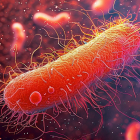Spanish scientists have discovered a new genetic form of Alzheimer’s disease

Almost everyone who has two copies of a particular genetic variant APOE4 gene (apolipoprotein E4) increases the risk of developing Alzheimer’s disease in the future. A new Spanish study finds that It is almost certain that all people with two copies of this gene will eventually develop signs of Alzheimer’s disease. According to research carried out by scientists from the Sant Pau Research Institute. About 2 to 3% of the population has this variant, meaning a large percentage may suffer from this new genetic form of Alzheimer’s disease detailed in the journal. Natural medicine.
Spanish scientists have discovered a new genetic form of Alzheimer’s disease
New genetic form of Alzheimer’s disease
The results show that two copies They are not just a risk factor but this is a new genetic form of Alzheimer’s disease, and not a risk factor for the disease, as has been the case until now.
“More than 95 percent of people (with two copies of ApoE4) have AD pathology, either in the brain or in the biomarkers we analyze,” he explained. Juan Forteaco-author of the study from the Sant Pau Hospital in Barcelona.
The study also found that people with two copies of the gene develop the disease earlier than people with other variants of the APOE gene. The team stated that the predictability of the age at which symptoms began was similar to those in other genetic forms of the disease, such as autosomal dominant Alzheimer’s disease (ADAD) and Down syndrome Alzheimer’s disease (DSAD).

Research data
In an analysis spanning multiple cohorts—more than 13,000 people—the researchers found that nearly all APOE4 homozygotes had Alzheimer’s pathology and significantly higher levels of disease biomarkers beginning at age 55 compared with APOE3 homozygotes. At age 65, nearly all had abnormal cerebrospinal fluid (CSF) levels, and 75% had positive tests for amyloid. The prevalence of these markers increased with age, reaching almost complete penetrance over time.
“We found that people who had two copies of the APOE4 gene developed signs of Alzheimer’s disease; more than 95% had Alzheimer’s disease pathology either in the brain or in the biomarkers we analyzed,” Fortea said during the press conference. in which they announced their discovery.
Having two copies of the APOE4 gene may represent a new genetic form of Alzheimer’s disease.
They analyzed postmortem brain samples from 3,297 donors at the National Alzheimer’s Coordinating Center, as well as brain scans and biomarker data from 10,039 patients in five clinical cohorts. Researchers reported that post-mortem results from brain donors revealed that almost all of the 273 donors with two copies of ApoE4 showed signs of Alzheimer’s disease in the brain. The results were clear: People with two copies of APOE4 had a pattern of biomarker changes similar to ADAD and Down syndrome, but not people with one copy of APOE4.
“This gene has been known for more than 30 years and is known to be associated with an increased risk of developing Alzheimer’s disease,” explains the neurologist. “But we now know that virtually all people with this duplicated gene will develop biological Alzheimer’s disease. This is important because they make up 2 to 3 percent of the population.”
The study used samples from more than 2,000 brains.
Thus, the study found that almost all people with two copies of this variant develop Alzheimer’s disease, suggesting that it is not just a risk factor but a cause. Despite the results most patients were of European descenttherefore, more research is needed to determine whether the results are equally valid for people of different ethnicities.
“The study concluded that APOE4 homozygotes represent a genetic form of Alzheimer’s disease, indicating the need for prevention strategies, clinical trials, and personalized treatments,” the authors conclude.
Reactions
Not all scientists seem to agree with this conclusion:
“I don’t see anything in this paper that would justify the claim that having two copies of APOE4 represents some kind of ‘distinct genetic form’ of Alzheimer’s disease. It has been known for decades that APOE4 is a major risk factor for Alzheimer’s disease, that carriers of two copies are at increased risk, and that carriers of two copies are at substantially higher risk than carriers of one. Scientific Media Center David Curtis Honorary Professor at the Institute of Genetics, UCL (University College London).
“Regardless of the number of APOE4 alleles underlying the disease, the underlying disease processes appear to be similar in all cases of Alzheimer’s disease, suggesting that any effective treatment and prevention strategies yet to be developed will have broad application.”
The variant, known as ApoE4, has long been known to increase the risk of developing Alzheimer’s disease.
Scientists now consider Alzheimer’s disease to be a biological disease that can be diagnosed by looking for biomarkers even if there are no clinical symptoms.
References:
- Fortea J, Pegueroles J, Alcolea D, et al: APOE4 homozygosity represents a distinct genetic form of Alzheimer’s disease. Nat Honey (2024). https://doi.org/10.1038/s41591-024-02931-w
